Andrew Jefford describes why he thinks that the new appellation of Maury Sec has the potential “to be one of the rare ‘grands crus’ of the South of France”.
Let me ask you a few questions. Must power in red wine necessarily eclipse what we call ‘minerality’? Is old-vine Carignan best vinified in isolation? Do France’s bureaucrats always need a decade to sanction new appellations? Is it only outside French borders (in Spain’s Gredos, for example, or in Australia’s Clare Valley) that Garnacha or Grenache can mimic Pinot Noir? Is Châteauneuf the source of France’s greatest ‘big reds’? I’ve tended to reply ‘yes’ to all of the above – but Maury Sec is in the process of proving me wrong.
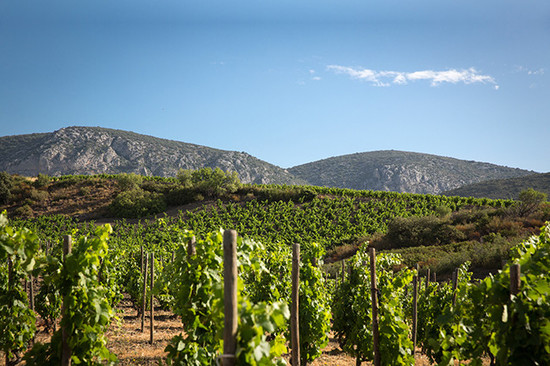
This appellation only came into being in November 2011 (though Maury without the ‘Sec’ is a sweet, fortified-wine appellation which has existed since 1936.) Much of the drive for this came from the prescient president of the village co-operative, Bernard Rouby, who saw earlier than most that a local future built exclusively on fortified wines was unsustainable. He also understood that simply appending Maury to the Côtes de Roussillon-Villages appellation for its dry wines, though that would have been easy enough, would not serve the area’s potential well.
He was helped – in the face of inevitable local scepticism – by an outsider. Olivier Decelle had built the frozen-food company Picard to market leadership in France by the time he bought Maury’s leading estate, Mas Amiel (now 170 ha), in 1999. Decelle had been introduced to Mas Amiel by Bordeaux wine consultant Jacques Boissenot, who was also convinced that great red table wines could be made there. (Decelle subsequently acquired properties in Bordeaux, and has also since set up a Burgundy négociant operation with Pierre-Jean Villa.)
‘We bought lots of little tanks and did some trials,’ Decelle remembered. ‘When I tasted the results, I knew that this was a second genre which absolutely had to be born.’ René Renou, the former president of INAO, came to visit in 2004, and acknowledged the potential. Renou died in June 2006, but the dossier was sewn up with unparalled speed because, according to the Roussillon region’s export director Eric Aracil, “the terroir evidence was so strong.” Much help also came from INAO’s director for Roussillon, Jacques Paloc, who had spent a huge amount of time walking in the area and who knew its geology and soils intimately. (Indeed Paloc has recently co-written a bilingual book on Maury with journalist Michel Smith.)
It’s not a huge zone (just 220 ha were declared for Maury Sec in 2014), and the wines tend to need the soothing of the years before they settle down to make their case. There are still many fine red wines made within Maury’s boundaries which either go to market as Côtes du Roussillon-Villages or as IGP Côtes Catalanes; many growers, in other words, regard the new appellation as probationary, and haven’t yet committed themselves to its future.
They should. On the basis of the Maury Sec wines which I have tasted so far, plus those sold under other names that could be Maury Sec, I would say that this extraordinary zone in the central Agly Valley has the potential to be one of the rare ‘grands crus’ of the South of France. Or, if you prefer, to produce the greatest red wines of Northern Catalonia, wines which deserve to be tasted and judged alongside those of the ‘grand cru’ of Southern Catalonia: Priorat. The two areas, in fact, have much in common.
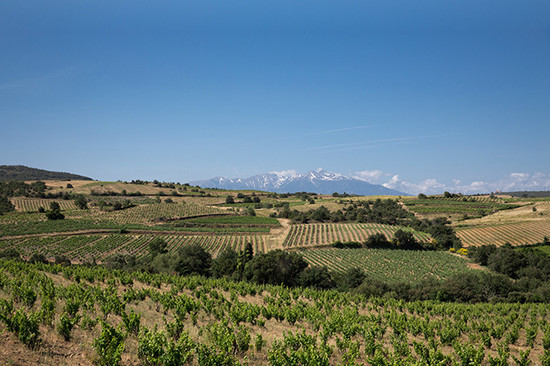
Let’s go back to the questions with which I began. None of us really know yet what we mean by ‘minerality’, though I would define this as unfruity flavour traces in wine which metaphorically recall the sensorial experience of breaking rocks and working soils. The sheer opulence of many ‘big reds’ can obscure these notes – but not here (and not in Priorat either). There is a scorpion-like mineral asperity lurking at all times behind these wines which gives them a seriousness and a dignity which eludes more voluptuous competitors from elsewhere.
The key variety in Maury is Grenache – though the appellation regulations also permit Mourvèdre, Syrah and Carignan. Maury is a little high and its summer air a little too dry for Mourvèdre, while much of the zone will surely in the end prove too hot for Syrah. The partnership with Carignan, though, is never more successful than here: it brings floral notes, lift, vivaciousness, and helps mitigate Grenache’s punishingly low yields. Maury is rich in old-vine vineyard of both varieties.
I’ve already mentioned the speed of Maury Sec’s accession to AOC status, driven by the evident potential of its soils (predominantly black schist, but with pockets of calc-schist, granite and limestone scree). Those vineyards lie between 100m and 400m above sea level – and Grenache from the higher sites unquestionably has some of the aerial finesse and grace which it can acquire outside French borders, but which you rarely find in Châteauneuf or even Gigondas (where its magnificence is meatier).
The contrast with Châteauneuf, finally, is a fascinating one. Maury Sec can be as grandiose and extravagant; both wines are often too much for prescriptive or nervous palates, and for those fretfully obsessed with stated alcohol levels (Maury Sec can be admirably balanced, with both grace and freshness, at 15%). Châteauneuf, in truth, is also a far larger and far more accomplished appellation at present, thanks to its longer fine-wine evolution – but I can see a time, a few decades hence, when great Maury Sec might challenge it for frontier flavour and power allied to the complexity which only great terroir can bring.
A further advantage is that ‘Maury’ is an easy name for non-French speakers to pronounce, and a much easier mouthful than a formulation like ‘Côtes du Roussillon-Villages-Lesquerde’. These things count, too.
Maury has a final asset: the astonishing drama of its landscape. The Pyrenees, and the often snow-capped Canigou, lie to the south of the Agly valley, while the peaks of Corbières – and the haunting, ruined fortress of Quéribus – like to its north. Luminous, airy, wild, remote, this is a landscape to lift and cleanse the soul. No one will ever say that about the Médoc, Champagne or the Côte d’Or.
Click next page to view seven wines from the Maury region, selected by Andrew Jefford.
All rights reserved by Future plc. No part of this publication may be reproduced, distributed or transmitted in any form or by any means without the prior written permission of Decanter.
Only Official Media Partners (see About us) of DecanterChina.com may republish part of the content from the site without prior permission under strict Terms & Conditions. Contact china@decanter.com to learn about how to become an Official Media Partner of DecanterChina.com.

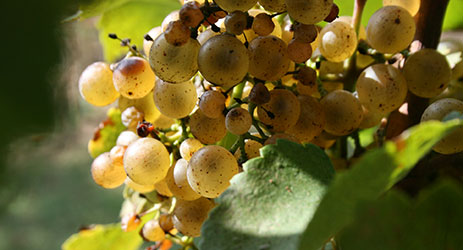
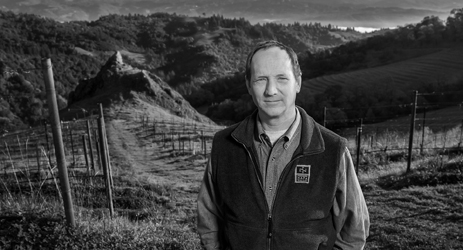
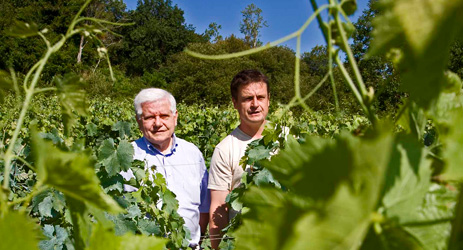
Comments
Submit